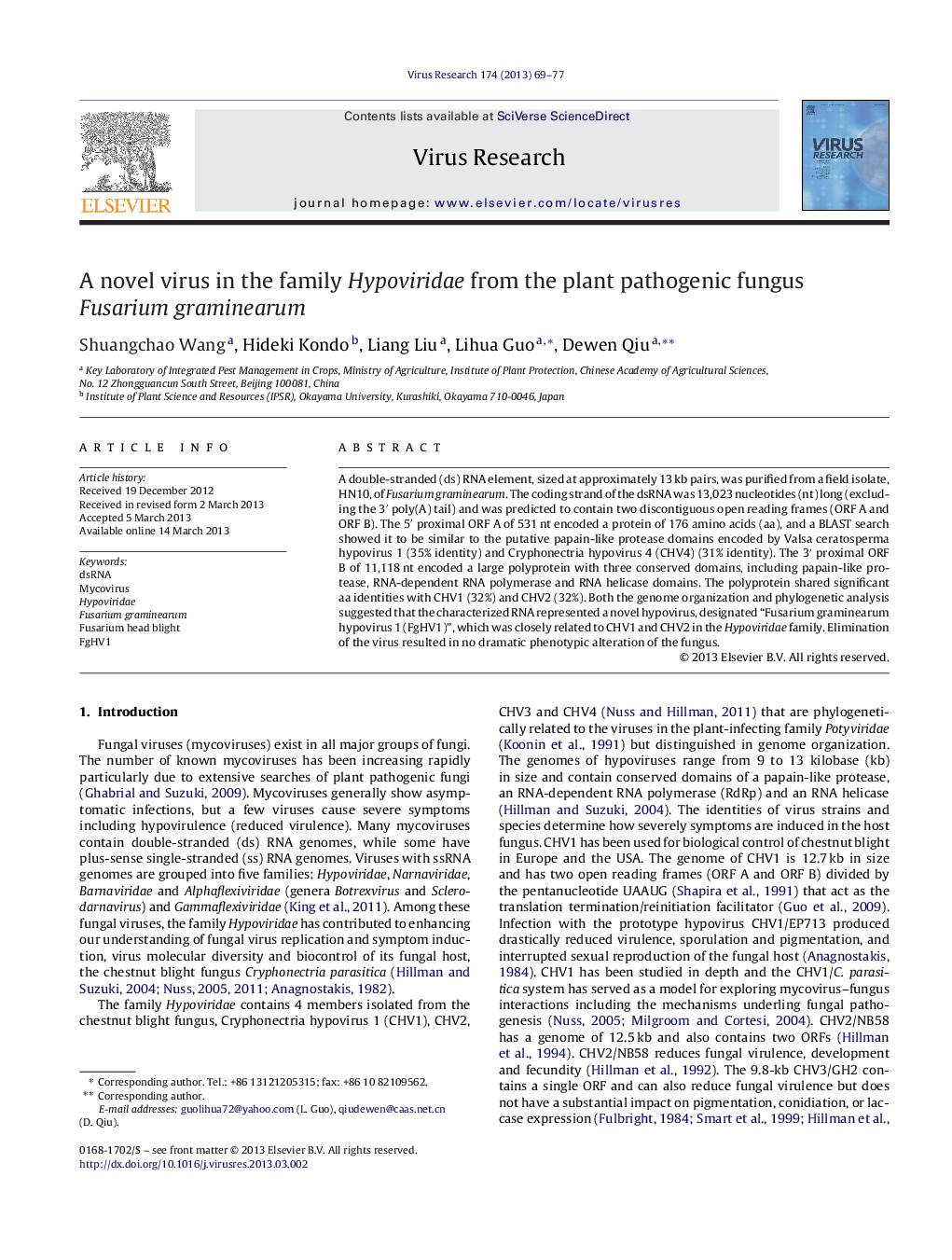| Article ID | Journal | Published Year | Pages | File Type |
|---|---|---|---|---|
| 3428592 | Virus Research | 2013 | 9 Pages |
•We isolated a novel mycovirus from the plant pathogenic fungus F. graminearum.•We sequenced the full-length of the virus with a genome of 13,023 nucleotides.•Phylogenetic analysis suggested FgHV1 was closely related to CHV1 and CHV2.•FgHV1 infection resulted in no dramatic phenotypic alteration to the host fungus.
A double-stranded (ds) RNA element, sized at approximately 13 kb pairs, was purified from a field isolate, HN10, of Fusarium graminearum. The coding strand of the dsRNA was 13,023 nucleotides (nt) long (excluding the 3′ poly(A) tail) and was predicted to contain two discontiguous open reading frames (ORF A and ORF B). The 5′ proximal ORF A of 531 nt encoded a protein of 176 amino acids (aa), and a BLAST search showed it to be similar to the putative papain-like protease domains encoded by Valsa ceratosperma hypovirus 1 (35% identity) and Cryphonectria hypovirus 4 (CHV4) (31% identity). The 3′ proximal ORF B of 11,118 nt encoded a large polyprotein with three conserved domains, including papain-like protease, RNA-dependent RNA polymerase and RNA helicase domains. The polyprotein shared significant aa identities with CHV1 (32%) and CHV2 (32%). Both the genome organization and phylogenetic analysis suggested that the characterized RNA represented a novel hypovirus, designated “Fusarium graminearum hypovirus 1 (FgHV1)”, which was closely related to CHV1 and CHV2 in the Hypoviridae family. Elimination of the virus resulted in no dramatic phenotypic alteration of the fungus.
